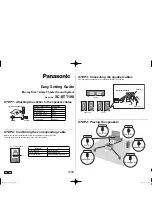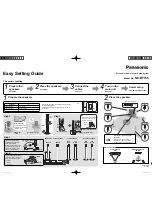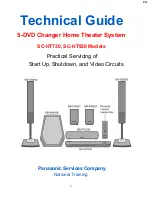
Protection against Overloading /Thermoswitch of the
Engine
The pump is furnished with an engine thermoswitch. If the
motor is overheated, the thermoswitch switches the pump
automatically off. The cooling period makes approx. 25
minutes, thenafter the pump will be automatically switched
on again. If the engine switch is on, it is necessary to find
and remove the cause (see also “Troubleshooting”). The
data here given cannot be considered as instructions for
“home made” repairs, because the repair works require
specific professional knowledge and skill.
Therefore you have to contact customer service if any
failure occurs.
It is unconditionally necessary to secure good air
supply in order to prevent overheating of the pump!
Do not install the pump in too tight shifts, do not cover
it with anything!
Operation
Air pressure
Pull out the network plug.
Open the consumption valve, e.g. water main tap, so that the
water may be pressed out of the system..
Turn the protection lid on the bleeding valve in the down
direction (F).
Check the air pressure in the vessel with compressor and
device for tyre pumping.
The specified air pressure is 1,5 ± 0,3 bar.
Bleeding
Release the bleeding screw and let the possible closed air
escape.
(Fig. A; pos. 2)
Water Bubbles
Release the screw for draining water bubbles so that the
pump may be drained (Fig. A; pos.11)
Vessel pressure
Switch off pressure set by the manufacturer is 3-4 bar after
completion of filling.
Setting pressure of the vessel (air) makes 1,5 ± 0,3 bar
and it should be regularly checked and modified (G).
Safety Instruction for Operator
Use the device only after you have carefully read Operating
Manual.
Observe all safety instructions mentioned in the Manual.
Behave responsibly against other persons
Instruction Step-by-Step
•
Connect the suction pipeline that complies with the
outlet connecting pipe to the check valve (foot
valve). Tighten all threading connections by sealing
band (B)
•
After filling up remove the bleeding screw on the
back side of the pump and on the connecting line of
pressure pipeline. (Fig. A; pos. 1 and 2) Fill the
device up until the water exits from the bleeding
hole (E)
•
Make tight the bleeding screw and retight it again.
Then make tight the pressure pipeline and connect
it.
•
Connect the pump to the electric network.
Caution: When installing suction and pressure
pipeline on corresponding connection lines, the
corresponding thread shall always be tightened
carefully so that no damage occurs due to cracking of
the pump shell (A) !
Caution: Careful sealing of thread connections
(A/B) and airless filling (E) of suction system – (suction
hose and pump shell) , will save you from trying to
perform suction that may often be unsuccessful!
Check the tightness of the foot valve (D) – Fill the
system according to the instruction (C) and pull the
suction hose out of the medium being repumped before
putting into operation for the purpose of checking (D) -
the liquid should not escape from the suction hose
now!
Deep suction – what is it? (H/K)
1. Foot valve with filter
2. Suction nech, injector
3. Injector
4. Outlet neck, injector
5. Injector jet
6. Venturi pipe, injector
7. Suction pipeline
8. Suction neck, pump
9. Filling screw
10. Ball valve
11. Pressure pipeline
12. Outlet neck, pump
13. Recirculating neck, pump
14. Recirculation pipeline
15. Recirculation neck, injector
Suction deep up to 30 m by means of the injector (K)
The physically conditioned limit of suction height of pumps
with deep suction has been approx. 7.5 m so far. After
introduction of a new procedure based on reverse leading of
water by means of the injector the suction depth can be up
to 30 m now. This output can be achieved as follows: a part
of sucked water is lead back to the injector during the
suction phase, thus a pressure is created enabling the water
to be sucked from such depths (inside dia of drilled hole at
least 120 mm).
How to assemble and operate the injector supply line?
The suction pipeline shall have the same or greater dia than
the suction necks of corresponding pump (point 8 and 9).
The suction pipeline and injector are to be connected as
shown in Fig. 1. The foot valve with filter (1) shall be
unconditionally used. Check, if the suction pipeline is clean
to prevent blocking of the injector.
Open the filling screw (9), fill the clean water into the pump
shell and close the screw again.
Assemble the ball valve on the outlet neck (10). Check if the
network voltage is the same as the pump engine voltage
(these data can be found on type label of the engine).
Close the ball valve and put the pump into operation.
Gradually keep opening the ball ventil till the maximum
pumping output is reached, then leave tha ball valve in this
position. This setting can be performed only manually.
15
Summary of Contents for HWW 1200 Tief
Page 2: ...B B A B E B 2 ...
Page 3: ...C D E F G 3 ...
Page 4: ...E B B H E B B B 4 ...
Page 5: ...K 5 ...
















































